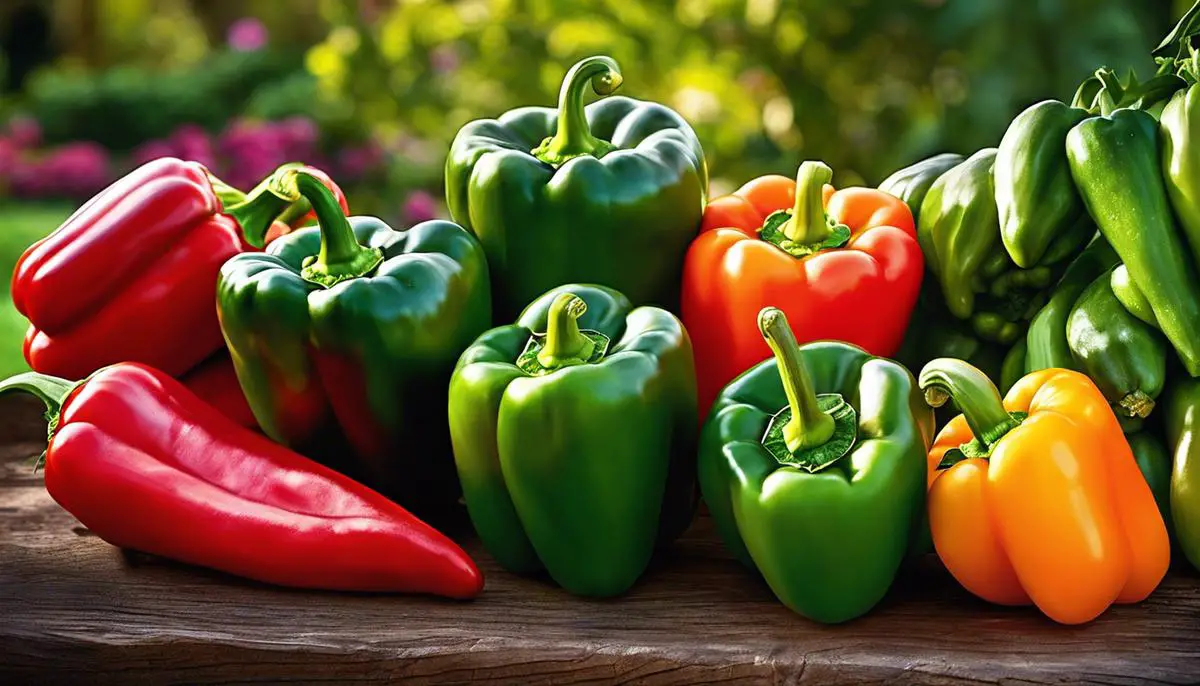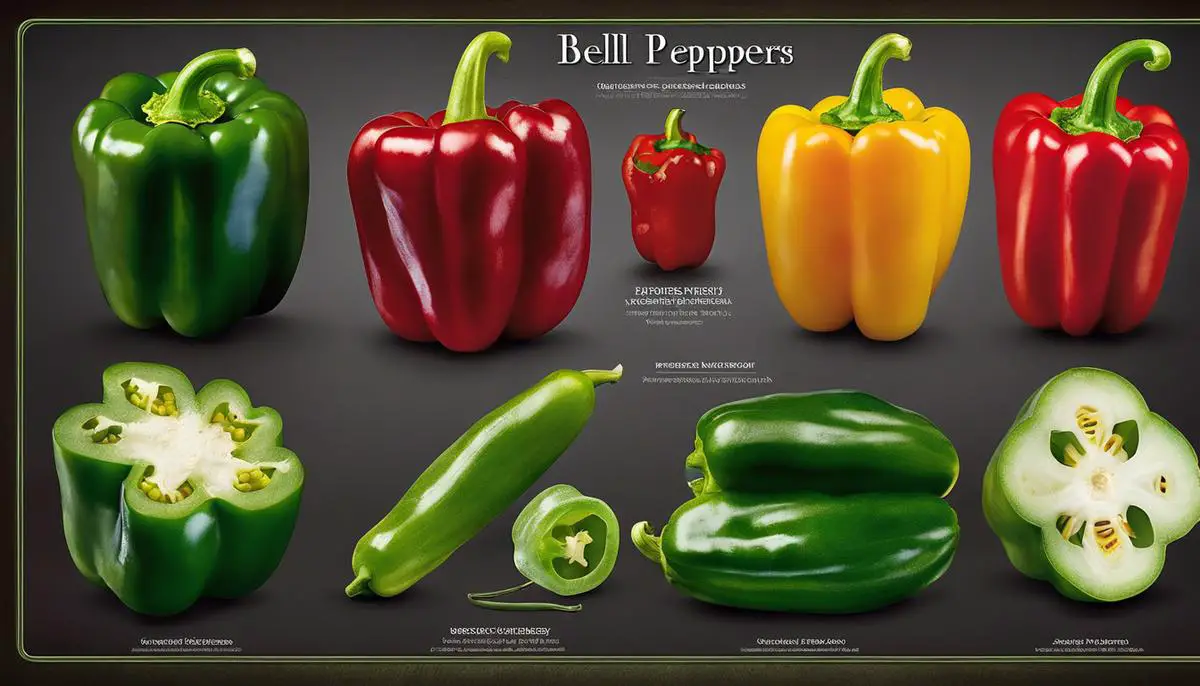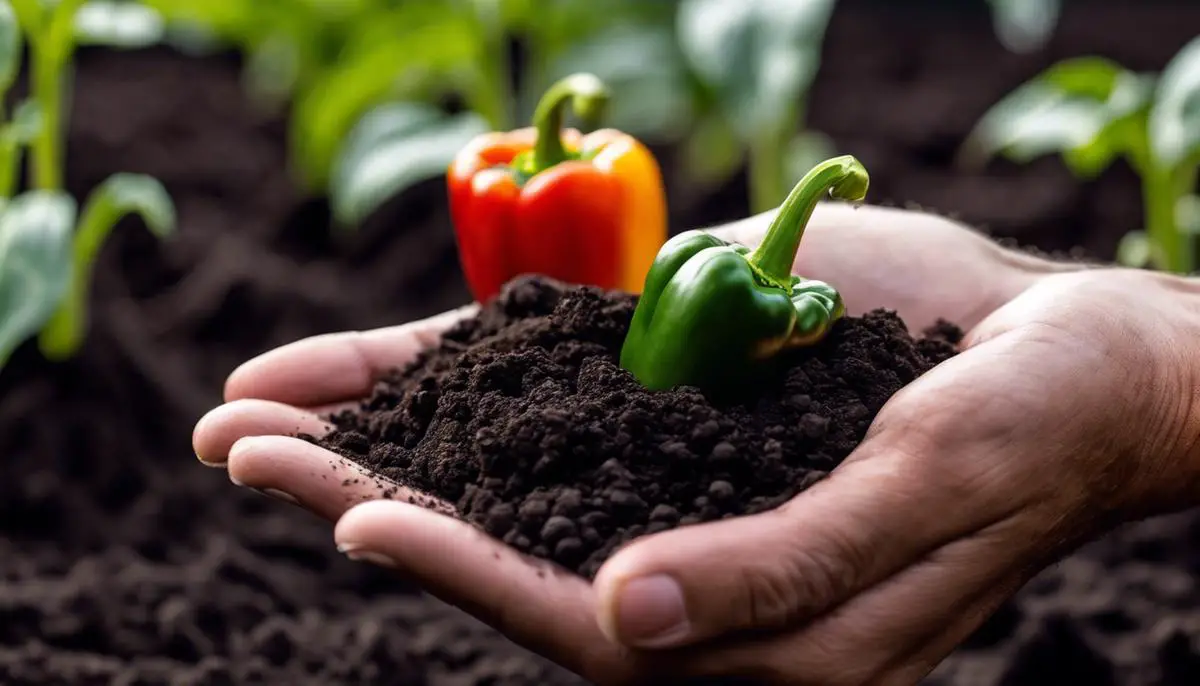Growing flavorful and healthy bell peppers right in your backyard begins with understanding the essence of quality soil. If you’ve ever found yourself wondering about the ideal soil conditions for nurturing these vibrant vegetables, you’re in the right place. In this informative piece, we’ll explore soil requirements for bell peppers, encompassing a host of critical factors like optimal pH, soil texture, and nutrient composition that every gardener or farmer should be aware of. Additionally, this resource will delve into methods to enhance your garden soil’s quality. We cover the potency of compost, fertilizers, and organic matter in fostering enriched soil, well-suited to produce luscious bell peppers. Lastly, safeguarding your bell pepper plants from detrimental soil-borne diseases is crucial, and this segment aims to provide a comprehensive understanding of the common enemies and prevention methodologies.
Soil Requirements for Bell Peppers

Improving Soil Quality
Enhancing Soil Quality for a Bountiful Bell Pepper Harvest
Peppers appreciate an environment that is nutrient-rich, well-drained, and generously basked in sunlight. But before you start scattering seeds and hoping for the best, let’s take a deep dive into our starting point: the soil.
Reader Poll: What online courses would interest you?
Adequate Soil Drainage
While the nutritious nature and neutral pH of loamy soil are the ultimate medium for your bell peppers, keep in mind that amending soil to provide appropriate drainage is equally vital. Despite their preference for a good drink, bell peppers despise water-logged soil. Therefore, pay close attention to ameliorate soil that drains too slowly or conversely, too swiftly. If battling with clay-rich soil, consider introducing organic matter such as composted leaves, bark, or straw to help loosen it up. For sandier soils, humus or compost amendments are your best bet to improve water retention.
Prime Soil Temperature for Bell Peppers
Subscribe to our newsletter!
Bell peppers, as tropical plants, prefer their surroundings warm. This applies not just to the ambient air temperature, but also the soil beneath their roots. Soil temperature fluctuations can significantly impact a bell pepper plant’s health. Aim for soil temperatures between 70-85° F (21-29°C). To attain this, add an organic mulch layer on the soil surface to regulate temperature, conserve moisture, and deter weed growth.
Boosting Soil with Beneficial Microorganisms
Microorganisms such as bacteria and fungus play an essential role in nutrient cycling, helping to make nitrogen, phosphorous, and other elements more available to the plants. Symbiotic mycorrhizal fungi can help bell pepper plants absorb more water and nutrients. To encourage their growth, incorporate aged compost into the soil, which usually harbors a healthy population of these helpful organisms.
Dealing with Soil-Borne Diseases
Preemptive strategies are key to thwart soil-borne diseases that could seriously impact your bell peppers. Rotate bell pepper growing areas every 2-3 years to interrupt the lifecycle of disease pathogens. Invest the interim years in “soil-cleansing” crops, such as corn or a cover crop that aids in disease suppression.
So, to the newbie gardeners and veteran green thumbs alike— get your gloves on and dig deep into the world of soil enhancement. The charm of cultivating bell peppers lies not only in the harvest but also in the journey, with each spade of earth turned in care and dedication. With a little expertise and a whole lot of enthusiasm, expect to lead your bell peppers to their most fruitful destiny and enjoy a vibrant, bountiful yield.

Preventing Soil Diseases
First off, it needs mentioning that preventing soil diseases that plague bell peppers often begins with adopting a disease-resistant variety. Not all bell pepper plants are equally susceptible to soil diseases, and some varieties display hardiness against certain common diseases. As such, a bit of initial research can save you from a lot of future headaches.
Next, the practice of crop rotation should not be overlooked. This often disheartens hobbyist gardeners due to the seeming inconvenience it presents, but it’s a proven method to mitigate soil disease. Harvesting bell peppers in the same spot year after year is rather akin to setting a dinner plate for soil pathogens. By frequently switching the planting site, you can avoid fostering a disease-promoting environment in your vegetable patch.
Adopting a good watering regime is almost as important as the choice of soil and plant variety. Overwatering creates conditions favorable for damping-off disease, which targets seedlings or mature plants, leading to root rot and eventual death. It’s critical to water the plant base, not the foliage, to reduce the soil spattering onto the leaves – a common way soil diseases spread to the rest of the plant.
Mulching shouldn’t be overlooked in the journey towards disease-free bell peppers. A layer of organic mulch protects the soil from rapid temperature variations, helps retain moisture, and creates a physical barrier against soil pathogens aiming for the plant. An added perk is that mulch naturally decomposes, gradually enriching the soil with beneficial nutrients.
Sometimes preventing soil diseases is as simple as being vigilant about plant spacing. Bell pepper plants need good air circulation to prevent the creation of a humid environment inviting for disease outbreaks. Adequate space between the plants means that excess moisture more readily evaporates, reducing the proliferation of potential pathogens.
However, despite all efforts, there might come a time when it’s necessary to contemplate soil sterilization. If a stubborn infestation occurs, sometimes the most effective solution is to kill off the problematic organisms but remember this method also eradicates beneficial soil inhabitants. Use this as a last resort, only if other preventative measures fail to yield results.
Lastly, remember that the best defense against soil diseases is a healthy plant. While attention to soil is critical, ensure your bell pepper plants are robust for a successful harvest. Regular feeding, correct placement for adequate sunlight, and avoiding damage to the plant’s roots during cultivation are all parts of the larger picture ensuring your bell peppers will thrive, even in the face of potential diseases.

In arming you with insightful knowledge of soil requirements, we hope to make your bell pepper cultivation adventure a rewarding one. Equally as crucial is educating growers on methods to improve soil fertility. By incorporating compost, fertilizers, and organic matter, you can optimize your backyard or farm for impressive bell pepper yields. Comprehension of soil-borne diseases that pose threats to bell pepper growth and effective methods to circumvent them, ensures not just quantity but also quality in your harvest. May this guide serve as a foundation for your foray into optimizing soil conditions for bell pepper cultivation – empowering you to grow robust and healthy crops that are a joy to harvest and consume.

